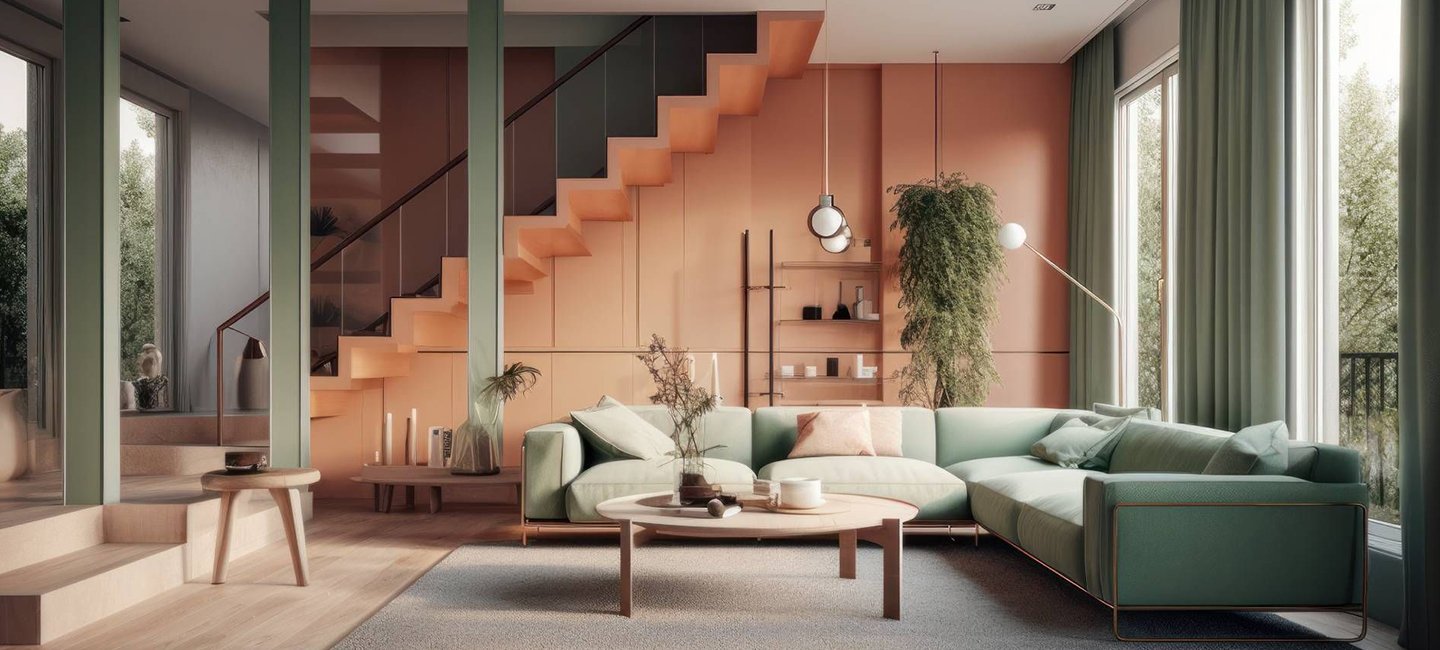In the intricate dance of human existence, the spaces we inhabit serve as silent orchestrators, shaping our experiences, influencing our emotions, and sculpting the narratives of our lives. Interior design, often perceived as the art of embellishing physical spaces, transcends mere aesthetics to become a profound exploration into the depths of human psychology. The psychology of space in interior design delves into the intricate interplay between the human mind and the built environment, unravelling how spatial arrangements, colour palettes, and sensory stimuli affect our cognitive processes, emotional responses, and overall well-being.
At the heart of this exploration lies the field of environmental psychology, a discipline that illuminates the nuanced relationships between individuals and their surroundings. From the primal instincts that govern our territorial behaviours to the subconscious cues that shape our perceptions of space, environmental psychology offers a lens through which we can understand the profound impact of our built environment on every facet of human existence.

Understanding Environmental Psychology
Environmental psychology is the study of how the physical environment affects human behaviour and mental processes. It encompasses concepts such as environmental perception, territoriality, and personal space. We explore key principles of environmental psychology, including:

Perception and Sensory Experience: How individuals perceive and interpret their surroundings through sensory cues such as sight, sound, and touch. We discuss how sensory stimuli influence mood and emotional responses in interior environments. Case studies include the use of texture and lighting to create sensory-rich experiences in retail spaces and hospitality venues.
Biophilia and Connection to Nature: The innate human tendency to seek connections with nature and natural elements. We examine the concept of biophilic design and its importance in creating environments that promote well-being and productivity. Case studies include biophilic design elements in office environments and healthcare facilities that improve patient outcomes.
Personal Space and Privacy: The psychological need for personal space and privacy, and its implications for interior design. We explore strategies for designing spaces that respect individuals’ need for solitude and social interaction. Case studies include the design of coworking spaces and residential layouts that balance privacy and community.

Designing for Emotional Well-being
Interior designers have the power to evoke a wide range of emotions through spatial design. In this section, we explore how designers leverage colour, lighting, and spatial layout to create environments that support emotional well-being. Examples include:

Explore how colour psychology, lighting strategies, and spatial layout can transform spaces into havens of tranquillity or hubs of energy.
Colour Psychology: The psychological effects of colour on mood and behaviour. We discuss how different colours evoke distinct emotional responses and explore practical applications of colour psychology in interior design. Case studies include the use of warm colours in hospitality settings and cool tones in healthcare environments.
Lighting Design: The importance of lighting in shaping the ambience and functionality of interior spaces. We examine how natural and artificial lighting can influence circadian rhythms, mood, and productivity. Case studies include daylighting strategies in educational facilities and dynamic lighting systems in retail environments.
Spatial Layout and Flow: The impact of spatial layout on human movement and interaction. We analyze examples of open-plan layouts, circulation patterns, and zoning strategies that enhance spatial flow and user experience. Case studies include the design of collaborative workspaces and retail environments that encourage exploration.

Creating Meaningful Environments
In addition to promoting emotional well-being, interior design can also create environments that resonate with users on a deeper level. In this section, we explore how designers incorporate cultural references, symbolism, and narrative elements to imbue spaces with meaning and identity. Examples include:

Cultural Context and Identity: How interior design reflects cultural values, traditions, and identities. We examine how designers draw inspiration from local culture and heritage to create culturally authentic spaces. Case studies include the integration of indigenous art and materials in hospitality projects and community centres.
Narrative Design and Storytelling: The use of narrative elements to create immersive and engaging environments. We discuss how designers craft spatial narratives that unfold over time, stimulating curiosity and emotional engagement. Case studies include themed entertainment venues and museum exhibitions that transport visitors to different eras and places.
Sensory Design and Multisensory Experience: The integration of sensory stimuli to create memorable and impactful experiences. We explore examples of multisensory design, including scent, texture, and sound, and their role in enhancing user engagement. Case studies include sensory gardens and immersive dining experiences that engage all five senses.

In terms of human experience, the spaces we inhabit are the threads that weave together the narratives of our lives. From the cosy embrace of a well-appointed living room to the bustling energy of a vibrant city square, each space carries with it a unique resonance that shapes our perceptions, influences our emotions, and leaves an indelible imprint on our memories. As we reach the culmination of our exploration into the psychology of space in interior design, we are reminded of the profound significance of our built environment in shaping the human experience. Through the judicious application of environmental psychology principles, designers wield the power to create spaces that transcend mere functionality to become catalysts for transformation, fostering connections, inspiring creativity, and nurturing the human spirit.

In the ever-evolving landscape of design, let us continue to strive for spaces that not only delight the senses but also nourish the soul, embracing the inherent complexity of human nature and celebrating the diversity of human expression. For in the harmonious union of mind and matter, lies the promise of a world where every space becomes a sanctuary, every environment a source of inspiration, and every individual a steward of the human experience.


